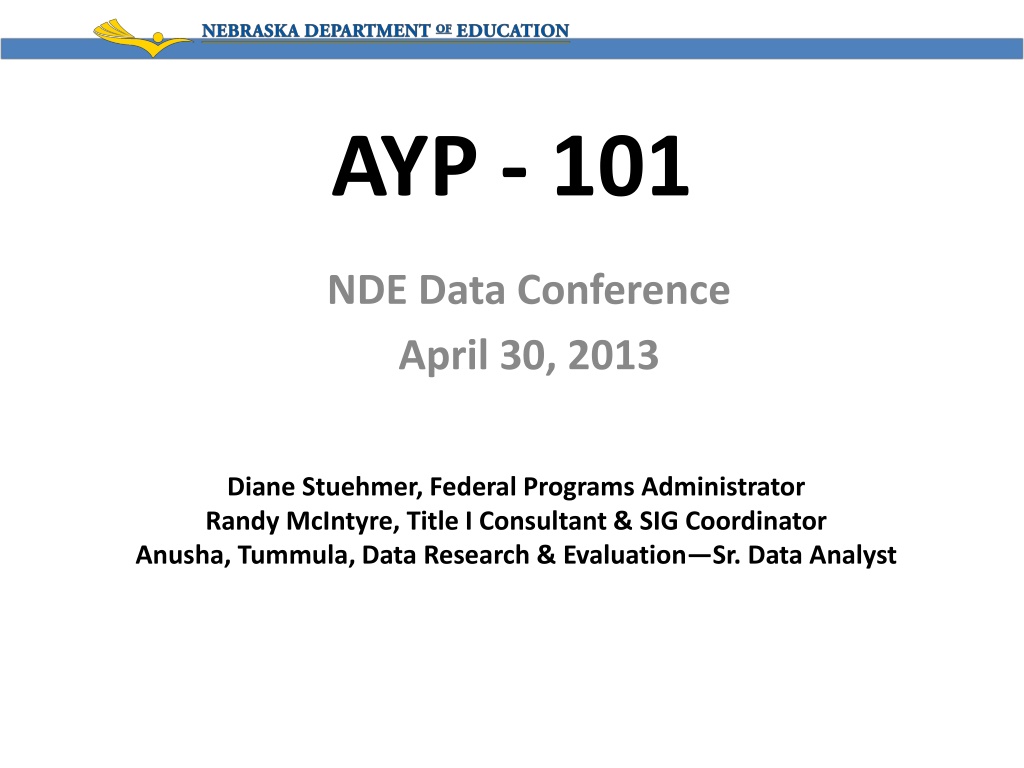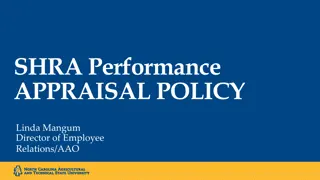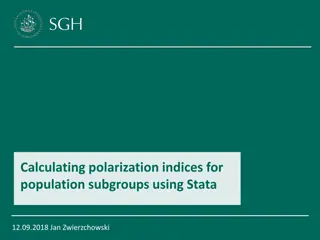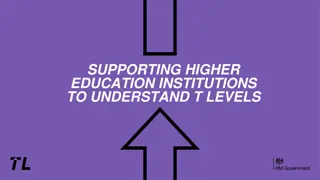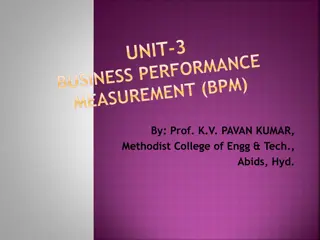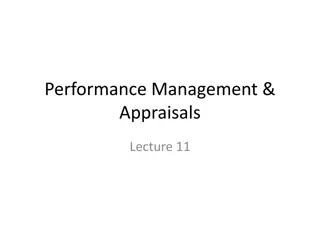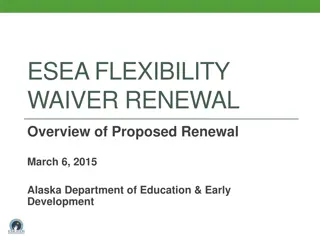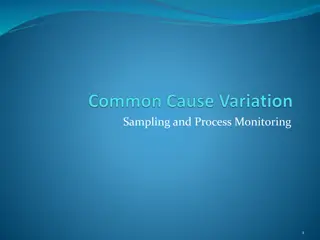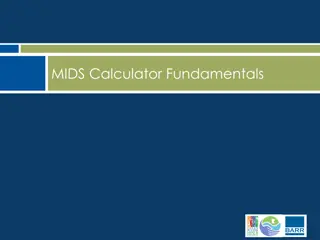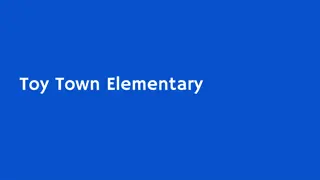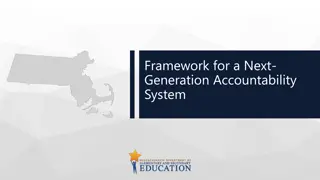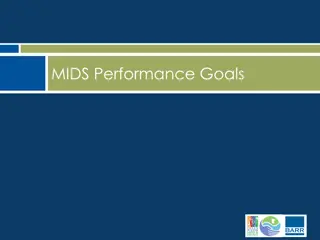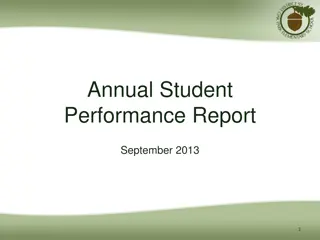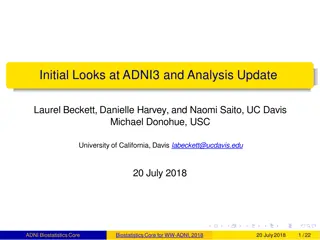Understanding AYP in Education: Goals, Subgroups, and Performance Levels
AYP (Adequate Yearly Progress) is a measurement used in education to assess schools' performance in meeting academic standards. AYP is calculated at both building and district levels based on various subgroups such as race, income level, and English proficiency. This assessment includes recently arrived limited English proficient students as well. NeSA performance levels and academic goals are set for different grade levels and subjects to track progress over years. Additionally, the concept of Full Academic Year (FAY) is crucial in determining student enrollment timelines.
Download Presentation

Please find below an Image/Link to download the presentation.
The content on the website is provided AS IS for your information and personal use only. It may not be sold, licensed, or shared on other websites without obtaining consent from the author. Download presentation by click this link. If you encounter any issues during the download, it is possible that the publisher has removed the file from their server.
E N D
Presentation Transcript
AYP - 101 NDE Data Conference April 30, 2013 Diane Stuehmer, Federal Programs Administrator Randy McIntyre, Title I Consultant & SIG Coordinator Anusha, Tummula, Data Research & Evaluation Sr. Data Analyst
What is AYP and why do we have it? 4/30/2013 2
AYP is calculated at the building level by grade span It is possible for a building (i.e. K-8) to have two decisions District level AYP is calculated by grade spans Elementary Middle School High School 4/30/2013 3
What subgroups receive AYP determinations? All Students American Indian/Alaska Native Asian Black or African American Hispanic Native Hawaiian or Other Pacific Islander White Two or More Races Students Eligible for Free or Reduced Price Lunch Special Education Students English Language Learners 4/30/2013 4
What students are counted as recently arrived LEP (Limited English Proficient) students? All English Language learners must be included in the AYP reporting USDE guidance requires districts to include recently arrived students (formerly called immigrants) enrolled in a U.S. public school for less than 12 months, in the assessment of Reading*, Math, and Science and count them for participation *A language proficiency test may be counted towards participation for AYP as the Reading assessment for the recently arrived students only 4/30/2013 5
What are the NeSA Performance Levels? Below the Standards (B) Meeting the Standards (M) Exceeding the Standards (E) Two possible decisions MET includes M & E above NOT MET includes B above 4/30/2013 6
AYP GOALS 2011-12 2012-13 2013-14 Reading Gr. 4 78% 89% 100% Reading Gr. 8 80% 90% 100% Reading Gr. 11 79% 89% 100% Mathematics Gr. 4 67% 84% 100% Mathematics Gr. 8 67% 83% 100% Mathematics Gr. 11 61% 80% 100% Writing Grade 4 Writing Grade 8 62% 61% 62% 61% 62% 61% Graduation Rate 90% 90% 90% 7 4/30/2013
What is considered a Full Academic Year (FAY)? A student enrolled on the last Friday in September and also received a performance level of Below the Standards (B), Meeting the Standards (M), or Exceeding the Standards (E) 4/30/2013 8
Students with one of the following Reason Not Tested codes are excluded from performance calculations EMW Emergency Medical Waiver NLE No Longer Enrolled RAL Recently Arrived LEP (only affects the calculation of percent proficient for Reading) ALT Alternate Assessment (only affects the calculation of percent proficient for Writing) FNS Foreign Language; not Spanish (only affects the calculation of percent proficient for Writing) 4/30/2013 9
What students are included in the Participation calculations? Any student enrolled at the school as of February 1st, or transferred in before the end of the testing window, and does not have one of the following Reason Not Tested codes: EMW, NLE, or RAL. (RAL only affects the calculation of percent participation for Reading) It is possible for a student to be a participant, but not considered enrolled a full academic year. 4/30/2013 10
Why does subgroup size matter? An AYP decision is determined for each subgroup having 30 or more students for each grade span within a school and district. No AYP decision can be determined if < 30 students in the subgroup masking rules are applied If < 10 students in a subgroup, the information will be masked and marked with an asterisk (*) If > 10, but < 30 students in a subgroup, the information will be masked and marked with a tilde (~) 4/30/2013 11
What is an AYP Rating? For subgroups with 30 or more students, an AYP decision is based on whether the proficiency of the subgroup meets or exceeds the State goal. Two possible decisions: MET or NOT MET 4/30/2013 12
Grade Span Federal Accountability Indicator 1 is Reading Performance Indicator 2 is Mathematics Performance Indicator 3 is Participation (Reading & Math) Indicator 4 is Other Academic Indicator Performance (Writing in Elementary & MS, Graduation Rate in HS) In order for a school or district level grade span to receive a MET, all four indicators must be MET. If ANY of the indicators are NOT MET, then the school or district decision is a NOT MET 4/30/2013 13
Indicator 1: Reading Performance Sum of the number of students enrolled FAY and have a performance level of Meeting or Exceeding the Standards Sum of the number of students enrolled FAY and do not have a Reason Not Tested code of NLE, EMW, or RAL 4/30/2013 14
What are Confidence Intervals? If the percent proficient for a subgroup is not greater than or equal to the AYP State goals, then it is appropriate to apply the 99% confidence interval to determine a statistically, acceptable range for the subgroup s percent proficient. A 99% confidence interval will provide two values: an upper limit and a lower limit. The upper limit will result in the highest percent proficient possible within the 99% confidence interval If the upper limit of the 99% confidence interval is equal to or greater than the AYP State goals, then the NOT MET for the subgroup becomes a MET with Confidence Intervals. 4/30/2013 15
Confidence Interval Calculator The following link will open an Excel AYP 99% Confidence Interval Calculator to enable the user easy access for determining the upper limit of the 99% confidence interval. The only inputs required will be the number of students proficient and the number of students enrolled a full- academic year (FAY) http://www.education.ne.gov/federalprograms/D ocuments/AYP%20Adequate%20Yearly%20Progre ss/99PCT_CI_Calculator_JUN2612.xlsx 4/30/2013 16
Confidence Interval Formula (Number FAY (Number FAY + 6.56)) x (Percent Proficient + (3.33 Number FAY) + 2.58 x ((Percent Proficient x (1 Percent Proficient) Number FAY) + (1.66 (Number FAY x Number FAY)) NOTE: MET with Confidence Interval is only displayed on the AYP Audit page of the SOSR Preview for districts to review. The public display on the SOSR will be listed as MET 4/30/2013 17
What is Safe Harbor? A separate calculation done after the calculation of AYP for subgroups if 30 Provides an opportunity for a subgroup that doesn t meet the state goal to still receive a MET, if the percent of students who are not proficient is reduced by 10% from the previous year (and received an AYP decision of MET for the Other Academic Indicator and for participation for the specific grade span.) If a writing subgroup has <30 students, two years of writing data is combined to see if the total number of students is 30 to see if safe harbor can be applied to reading and math Ensures that subgroups get credit for making significant year-to-year improvement, even if the subgroup misses the overall target. 4/30/2013 18
The following link will open an Excel Safe Harbor Calculator, to enable the user easy access to determining the upper limit of the 75% confidence interval. The only inputs required will be the number of students proficient and the number of students enrolled a full-academic-year (FAY) http://www.education.ne.gov/federalprogra ms/Documents/AYP%20Adequate%20Yearly% 20Progress/SAFE_HARBOR_Calculator_JUN26 12.xlsx 4/30/2013 19
AYP Indicator Level Decision if at least one group 30 (School and District Grade Spans) Looks at ALL subgroups combined If ALL subgroups receive rating of MET, indicator level decision is MET If ANY subgroup receives a rating of NOT MET, the indicator level decision is NOT MET 4/30/2013 20
Very Small Districts Used for districts with any school(s) or grade span(s) having no subgroups 30 students AYP decision will be applied to all grade spans in the Very Small District Applicable for Reading Performance and Mathematics Performance 4/30/2013 21
Very Small Schools Used for schools having no subgroups 30 students The AYP decision from the grade span at the district level will be applied to all schools having subgroups with at least one student, but less than 30 students at the grade span Applicable for Reading Performance and Mathematics Performance 4/30/2013 22
Very Small Schools (Continued) Starting 2010-11 school year, NeSA Reading results from two years will be combined for any grade span or school with no groups of 30. If the combined data for students enrolled a FAY results in at least one subgroup of 30 or more, then the school or district will no longer be included in the Very Small District/Very Small School process 4/30/2013 23
Indicator 2: Mathematics Performance Sum of the number of students enrolled FAY and have a performance level of Meeting or Exceeding the Standards Sum of the number of students enrolled FAY and do not have a Reason Not Tested code of NLE or EMW 4/30/2013 24
NOTE: Confidence Interval formula for Mathematics is the same as for Reading SAFE HARBOR calculation steps same as for Reading AYP subject level decision for Mathematics uses the same formula as Reading Starting with 2011-12 school year, NeSA mathematics results will be combined for any grade span or school with no groups of 30 for Very Small Districts/Very Small Schools 4/30/2013 25
Indicator 3: Participation (Reading & Mathematics) Student enrollment & demographic data from NSSRS is updated by districts prior to February 1st when the data is sent to the NeSA vendor. 4/30/2013 26
Percent Participation for Reading Sum of the number of students that do not have a Reason Not Tested code of NLE, EMW, RAL, SAE, OTH, INV, or PAR Sum of the number of students that do not have a Reason Not Tested code of NLE, EMW, or RAL 4/30/2013 27
Percent Participation for Mathematics Sum of the number of students that do not have a Reason Not Tested code of NLE, EMW, SAE, OTH, INV, or PAR Sum of the number of students that do not have a Reason Not Tested code of NLE or EMW 4/30/2013 28
Participation MET or NOT MET For subgroups with 30 or more students, an AYP decision for each subgroup is based on whether or not the subgroup s participation meets or exceeds 95% 95% participation results in a MET < 95% participation results in a NOT MET If the participation rate for any subgroup is a NOT MET, then the current year s participation data and the previous year s participation data are averaged to determine a two-year participation rate 4/30/2013 29
AYP Subject Level Decision for Participation If at least one group 30 (School and District Grade Spans) Looks at ALL subgroups combined If ALL subgroups receive Participation rating of MET, subject level decision is MET If ANY subgroup receives a Participation rating of NOT MET, the subject level decision is NOT MET IF there are no subgroups 30, then there is no AYP decision designated for that particular subject s participation 4/30/2013 30
Indicator 4: Other Academic Indicator NeSA Writing for grades 4 & 8 Graduation rate for High School AYP is calculated by subgroup 4/30/2013 31
Percent Proficient for Writing Sum of the number of students enrolled FAY and have a performance level of Meeting or Exceeding the Standards Sum of the number of students enrolled FAY and do not have a Reason Not Tested code of NLE, EMW, ALT, or FNS 4/30/2013 32
MET or NOT MET for Writing For subgroups with 30 students, AYP decision is based on whether the subgroup s percent proficient meets or exceeds the State goal. Confidence Interval formula is on Slide 16 4/30/2013 33
AYP Indicator Level Decision for Writing Based on the collective AYP decisions for each subgroup within the school level grade span or district level grade span. If all subgroups that have an AYP decision in writing are MET, then the AYP decision for performance for writing is MET If ANY subgroup has an AYP decision in writing of NOT MET, then the AYP decision for performance is NOT MET No decision is made IF there are no subgroups with a group size 30 4/30/2013 34
Indicator 4: Other Academic IndicatorGraduation Rate The 2011-12 school year is the first time using the Four- Year Graduation Cohort. Graduation goal: 90% If the graduation rate for a given subgroup is less than the state goal, then compare the subgroup s previous year s graduation rate with the subgroup s current year s graduation rate. If the subgroup s current year s graduation rate is at least two percentage points greater than the subgroup s previous year s graduation rate, regardless of the previous year s subgroup size, the subgroup receives a MET by comparison. All other subgroups with 30 or more students receive a NOT MET if the comparison does not indicate an increase of two percentage points 4/30/2013 35
A student is assigned an Expected Graduation Year when entering the 9th grade for the first time The Graduation Cohort Year (Year X) is based on the Expected Graduation Year For AYP purposes the graduation rate lags for one year (2011-2012 graduation rates will be used for calculating 2012-13 AYP) Beginning with 2012-13 school year, Nebraska is using the 5th year adjusted cohort graduation rate When enough data is available the 6th year adjusted cohort graduation rate will be applied 4/30/2013 36
Formula for calculating Cohort Graduation Rate Students receiving a regular high school diploma All students in the Current Graduation Cohort including students receiving a regular HS diploma, General Education Development (GED) diploma or credential, certificate of attendance, certificate of achievement, or an alternate award 4/30/2013 37
4/30/2013 38
Where can I learn more about Graduation Cohort? Graduation Cohort Analysis Tool (G-CAT) Quick Reference Guide: www.education.ne.gov/.../Cohort_Graduation_Cohort_A nalysis_Tool_Quick _Reference_Guide_2010_11_05.pdf Guidance for Graduation Cohort: http://www.education.ne.gov/nssrs/docs/Guidance_for_ Graduation_Cohort_2_0_0.pdf 4/30/2013 39
AYP Graduation Rate Decision AYP decision for graduation rate, at a school grade span level or district grade span level, is based in the collective AYP decisions for each subgroup within the school level grade span or district level grade span. If ALL the subgroups that have an AYP decision for graduation rate are MET, then the AYP decision for the Other Academic Indicator is MET. If ANY subgroup has an AYP decision for graduation rate of NOT MET, then the AYP decision for the Other Academic Indicator is NOT MET. 4/30/2013 40
IF there does not exist at least ONE subgroup with a group size 30, then there are no subgroups with an AYP decision for graduation rate, Then there is no AYP decision for the Other Academic Indicator 4/30/2013 41
Continuous Years of Progress (CYP) for Federal Accountability AYP MET: Both previous year s AYP decision AND current year AYP decision are MET NOT MET: Previous years AYP decision is MET and the current year s AYP decision is NOT MET NOT MET, IMPROVEMENT SHOWN: Previous year s AYP decision is NOT MET ANDthe grade span is NOT in NEEDS IMPROVEMENT ANDthe current year s AYP decision is MET 4/30/2013 42
CYP for Federal AYP (Cont.) NEEDS IMPROVEMENT: Having a NOT MET for two or more consecutive years in the same subject area in the same grade span Performance AND/OR Participation NOTE: It takes two consecutive years of MET, in the subject area and grade span that caused the identification, to be removed from Needs Improvement status. 4/30/2013 43
Diagrams and Instructions for AYP http://reportcard.education.ne.gov/Documen ts/DiagramsandInstructionsforAYP20112012.p df 4/30/2013 44
What information are districts required to report to parents/public? Districts are required to provide reports to the public that include the following: Information on student achievement at each proficiency level on the State academic assessments Information that provides a comparison between the actual achievement levels of each subgroup and the State s annual measurable objectives for each group of students on each of the academic assessments 4/30/2013 45
The percentage of students not tested The most recent 2-year trend in student achievement Aggregate information on any other indicators used by the State to determine AYP of students in achieving State academic standards disaggregated by student subgroups Disaggregated graduation rates for secondary school students 4/30/2013 46
Information on the performance of districts regarding AYP status Must include the number and names of each school identified for Title I School Improvement Professional qualifications of teachers The above information is available on NDE s SOSR (State of the Schools Report) 4/30/2013 47
Districts using Title I-A funds are also required to provide individual reports of student progress on the standards to parents of ALL children in Title I schools in both Targeted and Schoolwide projects 4/30/2013 48
What happens if a school or districts does not meet AYP goals for two consecutive years? Two years of not meeting AYP in the same subject (performance OR participation) identifies a school /district for Needs Improvement Consequences for Title I schools / districts 4/30/2013 49
Who can apply for Title I Accountability funds? Any Title I school identified for Needs Improvement and not currently a recipient of School Improvement Grant (SIG) funds is eligible to apply for Title I Accountability funds Application in GMS 4/30/2013 50
